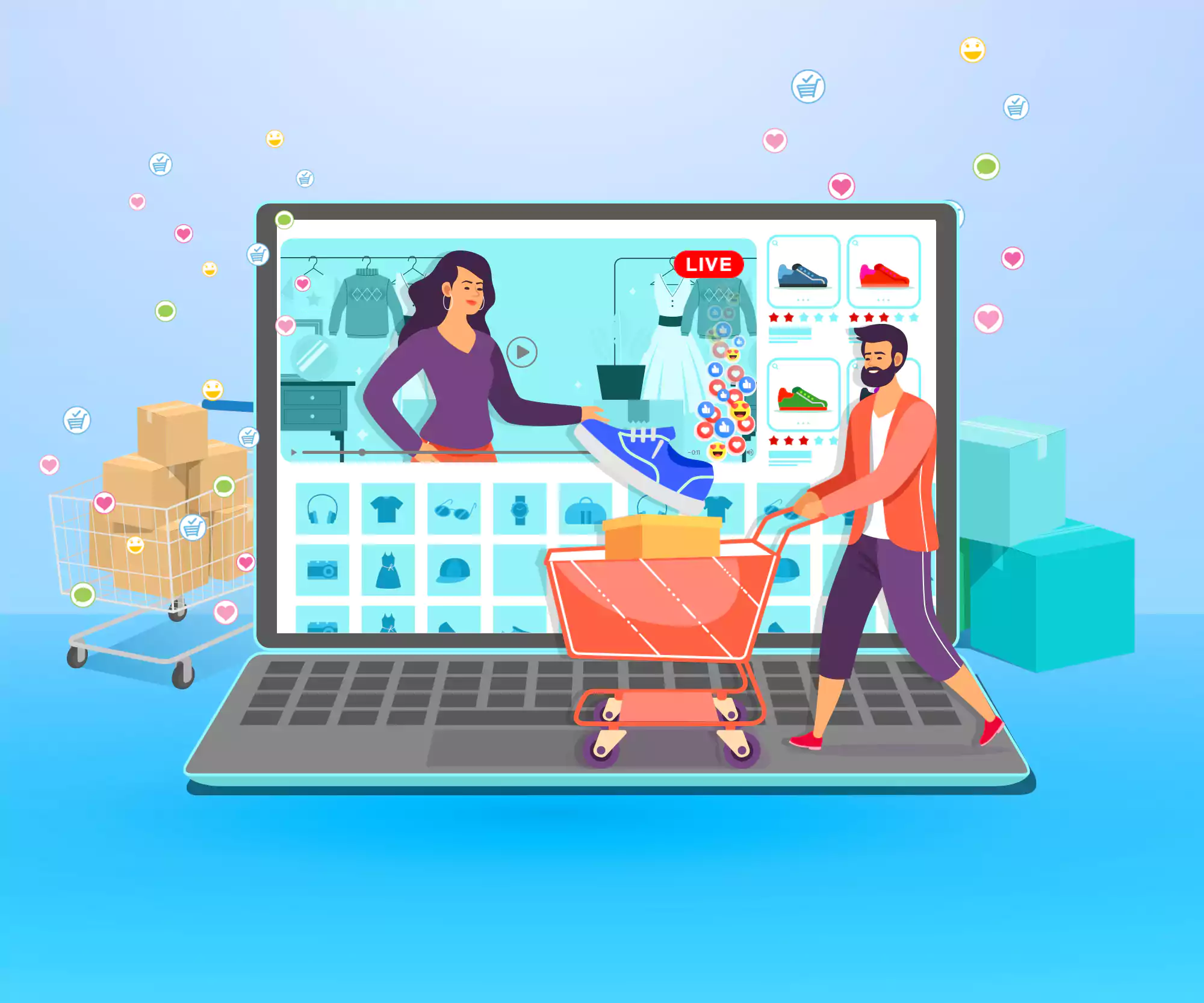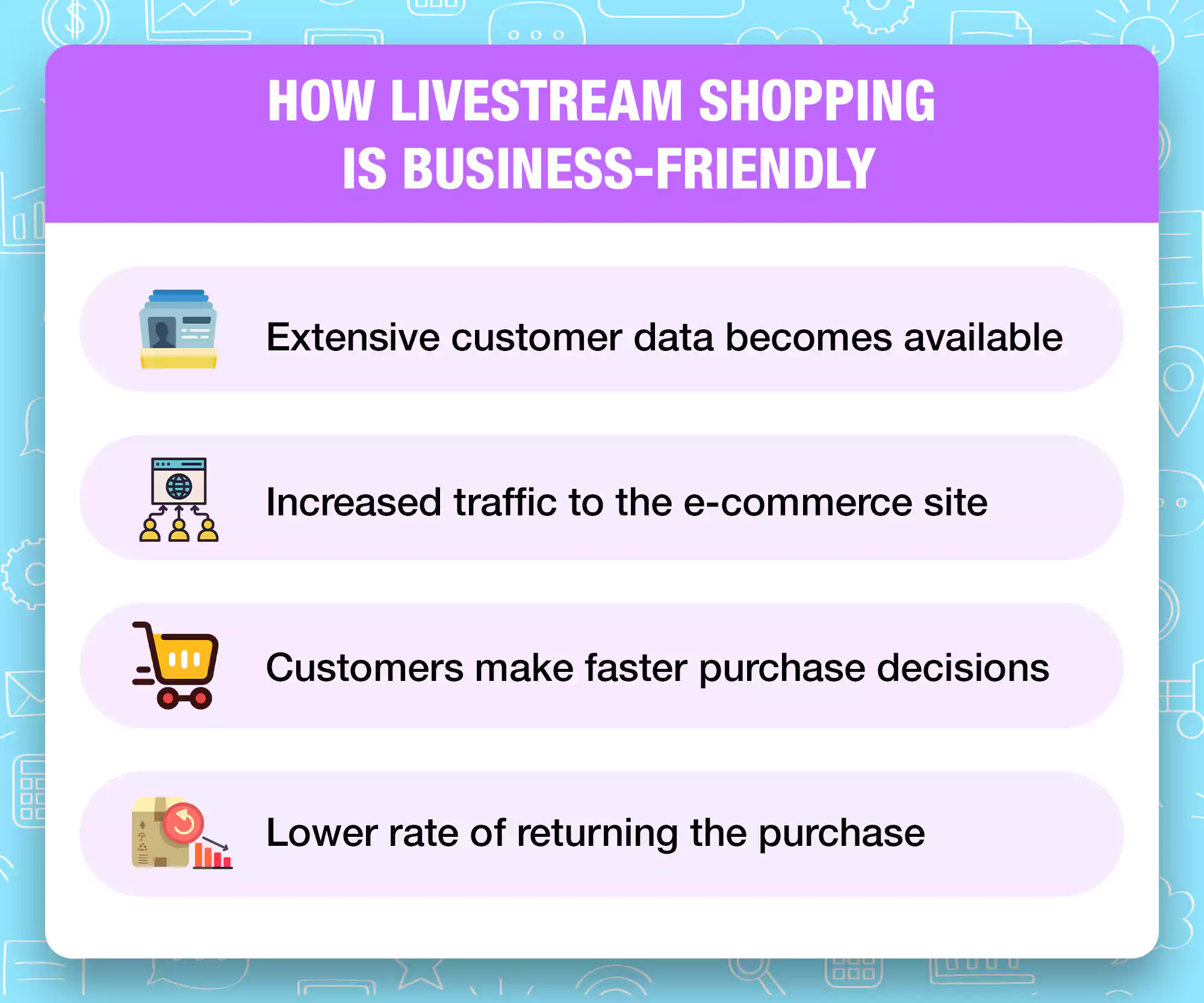
Did you think online shopping would follow the same ‘browse, select, and add to cart’ routine? Expect more and fast with the livestream shopping experience. It’s becoming a quick favourite on e-commerce sites, and no prizes for guessing why. This experience could be your favourite influencer trying out a product for you in real time, inviting you to interact directly with them as it happens. What a time to be alive!
The concept, of course, isn’t new. We’re quite familiar with the teleshopping phenomenon because we lived through it (hello, millennials!) or because we’ve seen it memeified (suh, Gen-Z?).
On a virtual platform, however, livestream shopping offers a wide range of possibilities, attracting billions of dollars in investment. Curious? Read along.
How does livestream shopping work?
Very smoothly. If you’re more of a step-by-step person, here it is:
- Go to the shopping platform online.
- Click on the livestream channel.
- Watch the host try out a product.
- Ask relevant questions about the product and get your answers from the host.
- Click on the product itself shown nearby.
- Buy it!
Of course, e-commerce sites offer additional features to make this experience more engaging and unique. For instance, a countdown before the product becomes available is a great way to hype its arrival. In addition, it boosts eagerness among viewers, who collectively watch the seconds tick by in real time. Customers who purchase a product within a given period of time may receive a discount or an exciting offer. Additionally, these platforms offer live chats, pinned messages, spotlighted products, mini-players, and reaction features to encourage interactivity.
What makes livestream shopping successful?
The success of this concept lies in the fact that you are engaging with it on so many levels—and that makes your shopping experience more personal. You are playing quizzes, doing Q/As, and having a good time with an influencer you probably already follow. Here, content creators are also in a crucial position. Things could go south if they don’t polish the brands and solidify their reputation as influencers. As the platforms attract more buyers, they put more pressure on the hosts. A review or an interaction that results in a terrible user experience might do a lot of damage to their online image.
Social platforms like Instagram, YouTube and TikTok have played a significant role in consolidating the audience in one place due to their large user base. A survey of 13,000 consumers across 29 countries predicts that 61% of customers prefer to shop through social media apps—making them a viable option for live e-commerce. But business forecasters believe that a platform solely created for an interactive shopping experience will win in the long term. Such a platform would include features to accommodate different influencers, customers, and businesses in one place.
The gamification of shopping
The innate desire for online interaction is highest amongst Gen Z. They now want a gamified shopping experience too.
The various features of livestream shopping, like badges, rewards, in-app currency, and progress metres, enrich the act of shopping and transform it into an exhilaration. Today’s technology yields itself seamlessly for use in all such creative aspects and beyond. Shopping platforms extensively use Augmented Reality (AR), User Interface (UI), and User Experience (UX) to elevate the experience. For example, Macy’s, an American department store, uses AR in its virtual fitting rooms so that customers can make accurate purchases. Australian wine brand 19 Crimes uses AR characters to challenge its target audience to buy up the 19-bottle collection. Such animation and visual effects are hard to resist, especially within a generation that aches to explore.
Furthermore, big data will play a vital role in the smooth functioning of livestream shopping. It will help solve strategic issues by analysing behavioural patterns during the stream. For example, suppose you are a sportsperson. Then, the platforms will know that recommending fitness gear has a higher conversion rate than a makeup kit. With this personalised touch, the e-commerce industry is finally preparing for Web 3.0.
Who are the big players in this game?
As consumer demand for live shopping is gaining traction globally, many new livestream shopping services are emerging.
- NTWRK, for instance, is a video shopping application that has further popularised the idea of live commerce in the US market.
- E-commerce giant Amazon also extended its livestream shopping service called Amazon Live in India. It invites more than 150 creators from different domains to bring their following to the shopping app and take cuts from each sale they make.
- German beauty retailer Douglas is known for streaming different weekly shows with influencers. Due to this engagement, it has reported a growth of 40% in conversion.
- Giant retailer Walmart joined the race by partnering with content creators on TikTok and YouTube. Interestingly, Walmart became the first retailer to try its hands on Twitter’s shopping tools.
However, it’s evident from revenue reports that the China-based online shopping platform Taobao—which Alibaba owns—remains the world’s biggest player in the livestream shopping game. Moreover, the Chinese e-commerce market is expected to reach $423 billion in revenue by the end of this year.

Why is livestream shopping big in China?
It’s been almost six years since the Chinese e-commerce company Alibaba pushed the livestream phenomenon on its platform called ‘See Now, Buy Now.’ And today, live streaming is an integral part of the e-commerce industry in the country. Between the years 2017 and 2020, live e-commerce in China skyrocketed. The value grew at a compound annual growth rate of 280%!
The reason for this rapid growth was simple: they were the first to experiment. Although retailers at the time were dabbling with the concept, China took the lead. It took less than five years to become a cutting-edge sales channel in China, and it grew even more during the pandemic.
Two of China’s most widely used live e-commerce platforms are Taobao and Douyin. They are, in a way, the ‘TikToks’ of the country, with influencers hosting shows on these channels enjoying the status of celebrities. One of them is Li Jiaqi, a beauty influencer known as the Lipstick King. Li is known for the large volume of sales he generates during his live stream. He also has a massive following amongst the youth.
Currently, the top categories in the live e-commerce market in China are apparel, fashion, and beauty products. But as the industry expands exponentially, new categories such as electronics and food items are also becoming popular.
How are businesses affected by livestream shopping?
Regardless of the outcome of the livestream, the businesses involved are playing a win-win game. As soon as the livestream ends, they’ll have insights into the sessions and have answers to questions like:
- What are the challenges that the buyers faced?
- How do they decide what’s good for them?
- Who saved which product?
- What type of questions were asked during the live show?
The platforms will use this data to formulate better strategies—ultimately strengthening the business.
The potential to engage customers here is massive. First, streaming will reduce the consideration period—a stage when a person takes an interest in your product. Then, as the host clears the customer’s doubts during the livestream, it will eventually lead them to the decision-making stage.
How will this new way of shopping evolve over the next few years? Well, that is yet to be seen, as the live e-commerce industry is still in its infancy. However, according to estimates, live-commerce-initiated sales could account for 10-20% of all e-commerce by 2026. The numbers show that the trajectory is upward; given that numbers don’t lie, this concept promises enormous potential.



